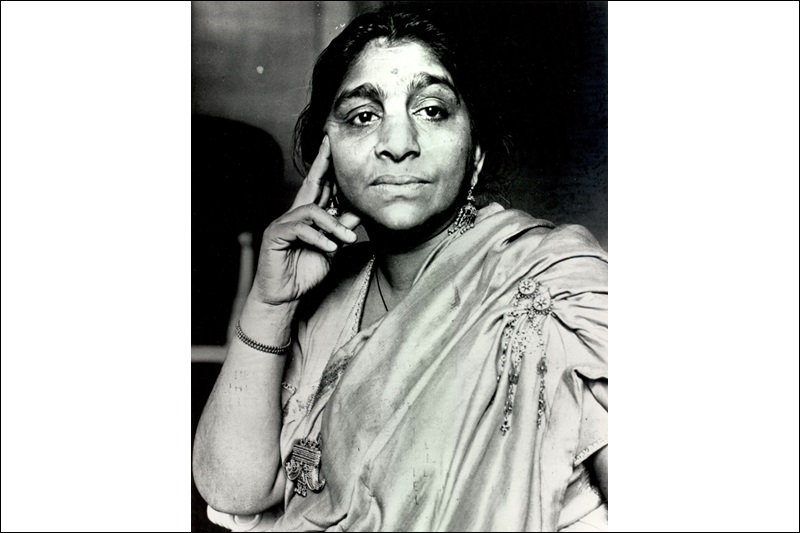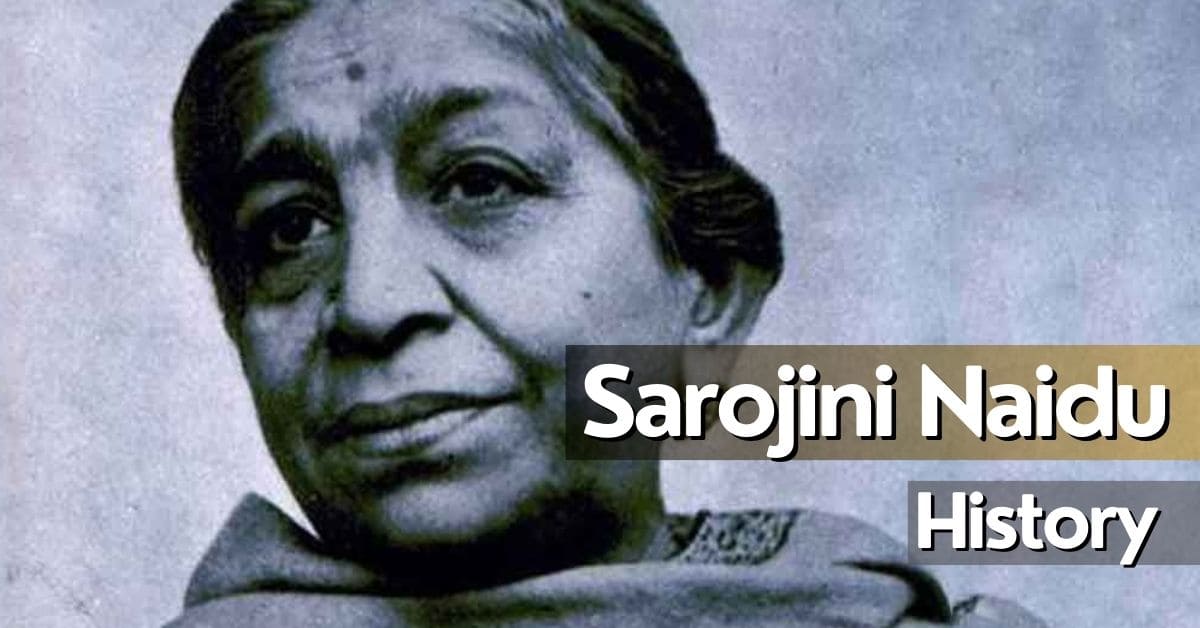Sarojini Naidu was a political activist
, poet and a woman who supported India’s independence. She knew many languages very well. Her father was also in favor of Indian independence and was active in social politics. In this article you will learn about Sarojini Naidu History. Sarojini is also known as The Nightingale of India. She has done many important works throughout her life and she also became the first governor of the state of independent India.
Sarojini Naidu History

Sarojini Naidu’s family was one of the respected families of Hyderabad. Most of the people of her family were associated in some way or the other with supporting the independence of India.
She was a very good speaker and poet who could express her thoughts in the least number of words. She has made a huge contribution to Indian independence, literature and the improvement of society.
Two famous and great leaders of the Indian freedom struggle, Mahatma Gandhi and Gopal Krishna Gokhale, had a hand in introducing Sarojini Naidu to Indian politics.
Sarojini was deeply affected by the partition of Bengal in 1905. She decided to join the Indian freedom struggle after the partition of Bengal.
She met Gopal Krishna Gokhale regularly and he also introduced Sarojini to other leaders of the Indian independence movement.
Gokhale suggested Sarojini to use her knowledge and art in this movement. Sarojini first met Jawaharlal Nehru in 1916.
Together with Nehru, Sarojini worked to improve the miserable conditions of indigo workers in Champaran in western Bihar. And she also fought hard with the British for their rights.
Sarojini Naidu toured all over India giving speeches to people on nationalism, women’s freedom and the welfare of youth.
She contributed to the establishment of “ Women’s India Association ” in 1917 along with Annie Besant and some other prominent people .
When Mahatma Gandhi launched the Non-Cooperation Movement, Sarojini Naidu became the first person to join it.

He supported Mahatma Gandhi and actively participated in many of his movements like Satyagraha Pledge, Khilafat Movement, Sabarmati Pact and Civil Disobedience Movement.
When Mahatma Gandhi was detained after the Salt March to Dandi in 1930, Sarojini Naidu along with other leaders led the Dharasana Satyagraha.
In the year 1931, Sarojini went to London with Mahatma Gandhi for the Round Table Conference with the British Government.
He had to go to jail several times for his involvement in Indian independence and political activities. When he was detained in 1942, he was sentenced to 21 months.
She also traveled to America and Europe to spread Gandhi’s ideas. She was also appointed as the first Governor of the United Province (now Uttar Pradesh) after India’s independence. And she held this post until her death.
Sarojini Naidu’s birth day i.e. 13 February is celebrated as Women’s Day (Indian National Women’s Day).
Sarojini Naidu Biography

Sarojini Naidu was born on 13 February 1879 in Hyderabad. Her father’s name was Dr. Aghornath Chattopadhyay. Dr. Aghornath Chattopadhyay was a scientist, teacher and philosopher.
He was a Bengali Brahmin and the Principal of Nizam College. He started the Nizam College of Hyderabad. Sarojini Naidu’s mother’s name was Barada Sundari Devi, she was a Bengali poetess.
Sarojini Chattopadhyay was the eldest of her eight siblings. Her father was the first member of the Indian National Congress in Hyderabad. Sarojini’s family was a very respected family in Hyderabad.
His father Dr. Aghornath Chattopadhyay was removed from the post of Principal due to his involvement in social politics.
Sarojini was a very intelligent and talented girl. She was fluent in Persian, Bengali, Urdu, English and Telugu languages.
In 1891, when Sarojini was only 12 years old, she passed her matriculation examination and was ready for university studies.

Her father wanted her to make her future in science or mathematics but Sarojini liked poetry more.
He wrote many poems with his unique writing skills. For example, he wrote a 1300 line English poem “The Lady of the Lake”.
Her father praised her writing skills. A few months later, Sarojini wrote a Persian play “Maher Muneer” with the help of her father.
From 1895 to 1898, she studied at King’s College, London, England. Then, after receiving a scholarship from the Nizam of Hyderabad, she also studied at Girton College, Cambridge University.
While Sarojini was studying in England, she fell in love with Muthyala Govindarajulu Naidu. Govindarajulu Naidu was a South Indian non-Brahmin doctor.
After returning to India, Sarojini got engaged to Govindarajulu Naidu at the age of 19 with the permission of her family. They were married in Madras in 1898 under the Brahmo Marriage Act 1872.
Both the families agreed to that marriage. And their married life was very happy. They both had five children. When they both got married, inter-caste marriage was not accepted at all in Indian society.
Sarojini Naidu, the first woman governor of Uttar Pradesh, died on 2 March 1949 at the Government House in Lucknow. After her death, she was cremated on the Gomti River.
Conclusion

Sarojini Naidu, besides being a poet, has made a huge contribution to the independence of India. She was very intelligent and talented since childhood.
His father Dr. Aghornath Chattopadhyay wanted him to study science or mathematics. But his mind was inclined towards poetry and literature.
After completing her matriculation, she went to England to study. Then she also received a scholarship from the Nizam of Hyderabad for further studies.
When she was studying in England, she fell in love with Muthyala Govindarajulu Naidu. Later, they both got married with the consent of their families.
Sarojini stepped forward for the Indian freedom struggle and movement in the year 1905 and never looked back.
She worked a lot for the upliftment of women and also worked to reform other evils of the society. If you want to ask any question related to this article or want to share something, then you can do so by commenting.
Read More : Razia Sultana History: Complete information in Hindi
FAQ (Frequently Asked Questions)
What was the cause of Sarojini Naidu’s death?
Sarojini Naidu died on Wednesday, 2 March 1949 at 3:30 pm due to cardiac arrest.
When was Sarojini Naidu’s collection of poems named “Golden Threshold” released?
Sarojini’s collection of poems titled Golden Threshold was released in 1905.
Why is Sarojini Naidu called the “Nightingale of India”?
Seeing the quality of Sarojini Naidu’s literary works and her poems, “Gandhi named her the Nightingale of India”.
